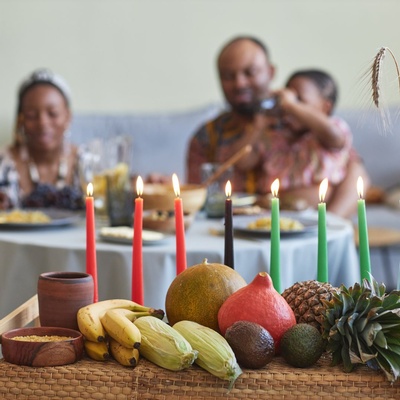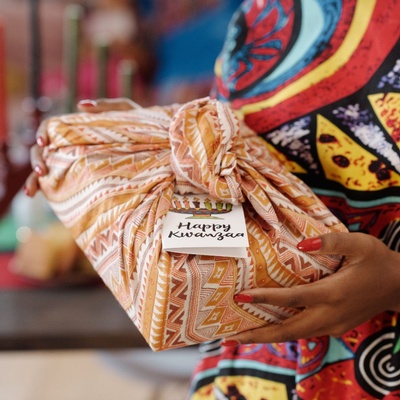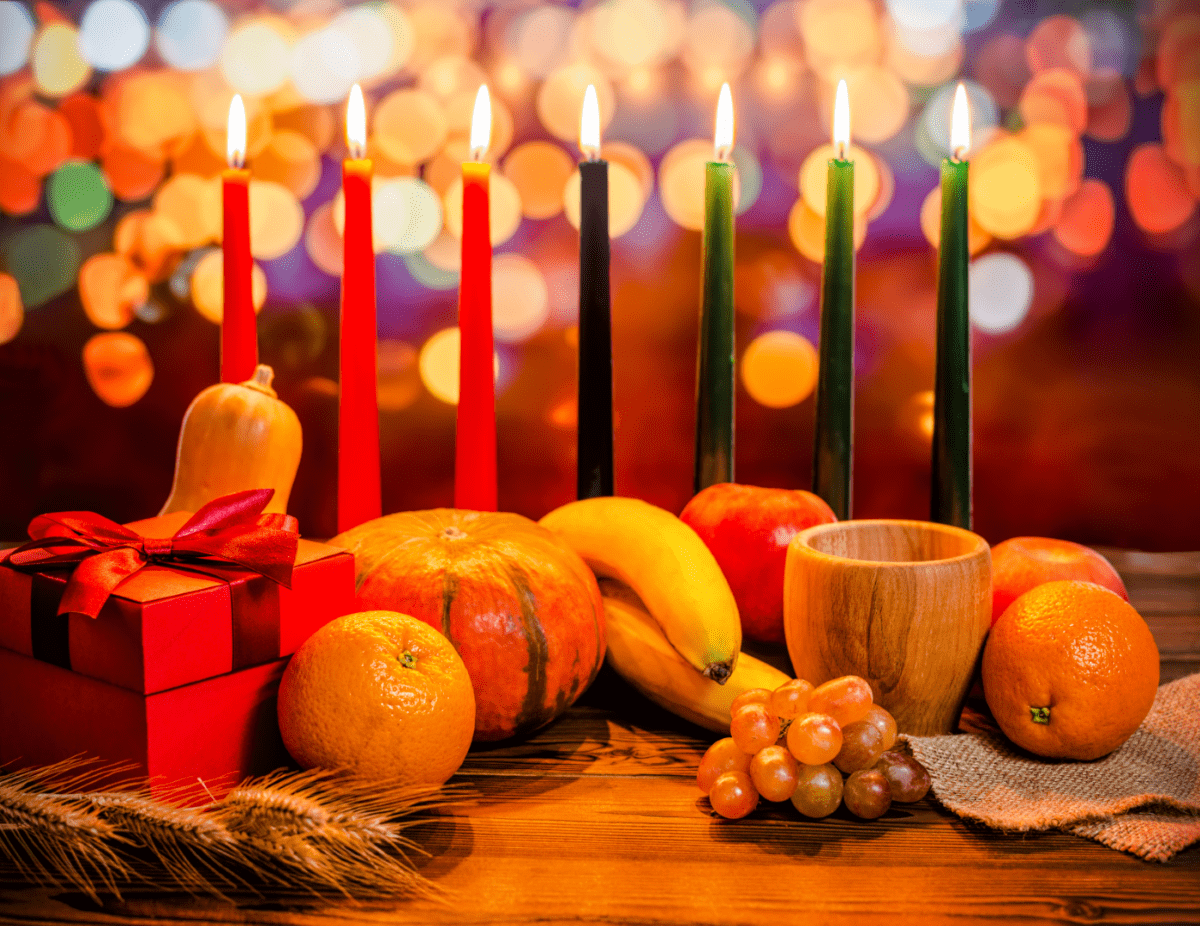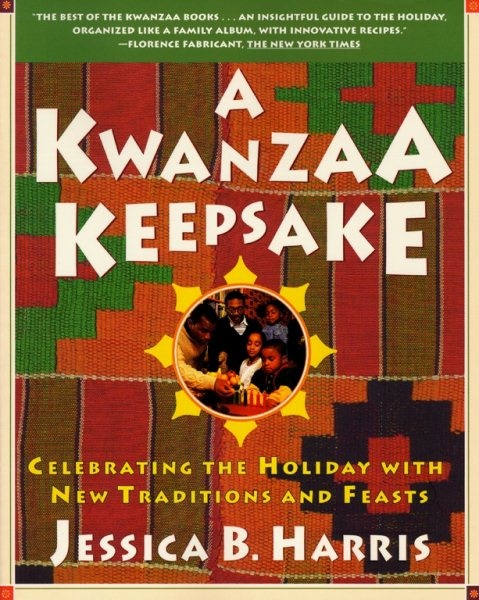A Kwanzaa Keepsake by Dr. Jessica B. Harris, author of High on the Hog, is an invitation to honor, connect, create, and cook. Besides the cooking, it may move you to gather family recipes to pass down as gifts, collect food to donate to those in need, or hand-make cards and gifts for your people.
A Kwanzaa Keepsake has recipes described by Dr. Harris as being "from Texas to Tunis, Savannah to Salvador da Bahia, and New York to Nigeria" for Umoja — the first principle and day of Kwanzaa. Perhaps "thoughtful foods, foods for thought, and some classics to bring in the new year" for Imani — the seventh principle and day — is more to your taste. What follows is inspired by the book — a bit about food and the holiday itself.
What are Kwanzaa’s roots?
Kwanzaa is a holiday created by Dr. Maulana Karenga in 1966 as a means of "cultural reaffirmation" for Black Americans or Americans of African descent. It is an homage to harvest festivals and celebrations throughout the African continent. It is a Swahili word taken from the phrase "matunda ya kwanza" which means "first fruits."
When is Kwanzaa celebrated?
Kwanzaa is a seven-day holiday beginning on December 26 and ending on New Year’s Day, January 1. Kwanzaa encourages reflection, introspection, family, community, and purposeful living. There is a principle for each of the seven days of Kwanzaa — the Nguzo Saba (Seven Principles) — to guide reflection and action throughout the upcoming year.
- December 26 is Umoja → Unity
- December 27 is Kujichagulia → Self-Determination
- December 28 is Ujima → Collective Work and Responsibility
- December 29 is Ujamaa → Cooperative Economics
- December 30 is Nia → Purpose
- December 31 is Kuumba → Creativity
- January 1 is Imani → Faith
Celebrate Kwanzaa along with other holidays of the season, or make it THE year-end celebration in your home. Kwanzaa’s focus on looking within and looking around, along with personal and communal responsibility can offer a welcome change of pace — encouraging us to slow down, gather, take stock, celebrate, and move forward together.
How is Kwanzaa celebrated?
Like other holidays, Kwanzaa has symbolic items and practices. The mkeka is the placemat for a celebration table where folks gather nightly. It "holds the display together and symbolizes the foundation of the holiday and our foundations as a people." Celebrants are encouraged to select a fabric from the African Diaspora and to know the history of that fabric and the people who made it or even make their own mkeka.
Mazao are the fruits and vegetables of the harvest that adorn the table. Choose mazao from the African diaspora.
"Think of pumpkins and squashes, of sweet potatoes and bananas, of watermelons and mangoes, of sugar cane and okra, and all of the bounty of the Motherland and of this hemisphere — bounty that we eat daily."
Each child who lives in the home is represented by a muhindi, an ear of corn, on the mkeka. It symbolizes children’s abundant potential as our future generation. Can you get the muhindi and other mazao from an African or Caribbean market? Did you grow it in your community garden?
"As you set up the display, thank the fruits and vegetables for contributing to our survival."
Each of the seven nights folks gather at the celebration table to consider the Nguzo Saba (Seven Principles). The celebration of Kwanzaa begins with asking, "Habari gani?" meaning "What’s the news?" On the first night, the response is, "Umoja!" This will continue each night with the response being the Kwanzaa principle of the day. Then, traditionally the youngest child lights one candle of the seven candles — the mishumaa saba — on the kinara (candleholder), before sharing their perspective on the day’s principle.

The kinara symbolizes African ancestry and roots. The black candle represents the people. It is placed at the center of the kinara and lit on the first night, Umoja (Unity). Red candles symbolize struggle and are set on the left. Green candles symbolize the future and are set on the right. On the second night, Kujichagulia (Self-Determination), a red candle is lit. On the third night, Ujima (Collective Work and Responsibility), a green candle is lit. The nightly lighting of the candles proceeds accordingly, alternating between red and green. It visually represents how there is no future (green) without struggle (red) first.
After the candle is lit, libations, referred to as tambiko, are poured from the "communal cup of unity," or the kikombe cha umoja. It represents the shared connection and collective unity of all people of African descent. As the tambiko is poured from the kikombe cha umoja, an ancestor’s name is called in remembrance.
Kwanzaa gifts — zawadi — are given in honor of upholding Kwanzaa values and principles and offer the opportunity to practice the values of Kuumba (Creativity), by making gifts or Ujamaa (Cooperative Economics), by purchasing handmade gifts from African makers or makers of African descent.

"The personal meaning of each and every holiday comes from the manner and commitment with which the celebrants choose to participate in it."
Join us at the Free Library for special Kwanzaa celebration events. Check out A Kwanzaa Keepsake and other books about Kwanzaa. Learn more from the holiday's official website. Consider how you might practice and live the principles of Kwanzaa every day in your home, with your family, at work, and in the community.
Happy Kwanzaa!
Kwanzaa yenu iwe na heri!
Have a question for Free Library staff? Please submit it to our Ask a Librarian page and receive a response within two business days.


